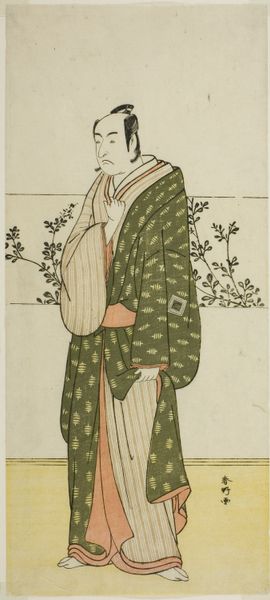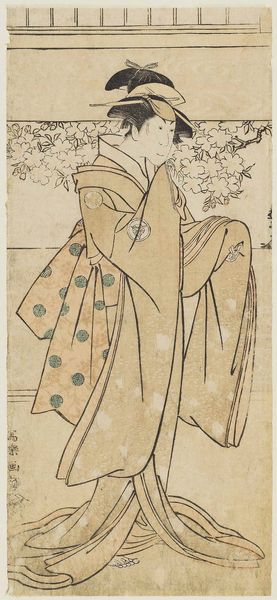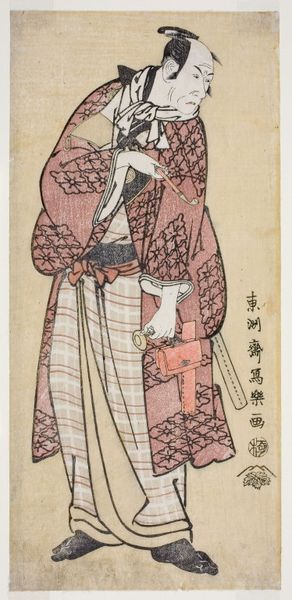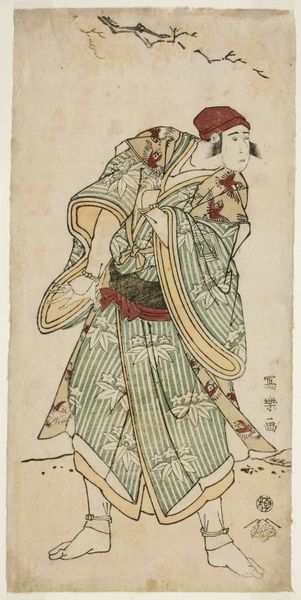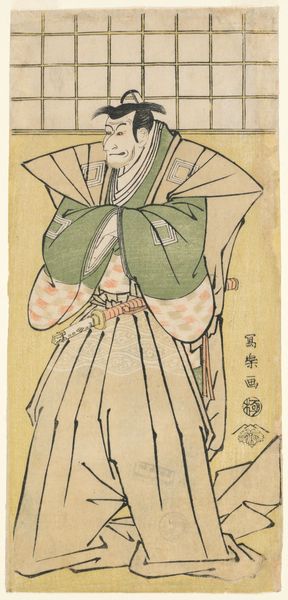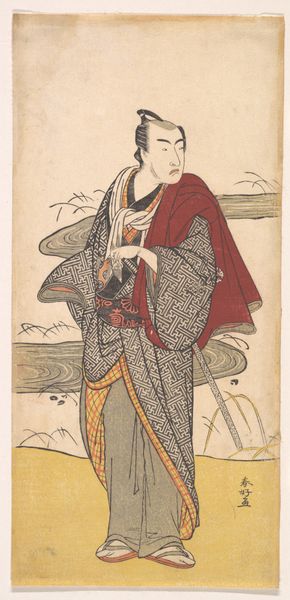
print, woodblock-print
#
portrait
#
ink painting
# print
#
asian-art
#
ukiyo-e
#
woodblock-print
#
genre-painting
Copyright: Public Domain
Editor: So, this lovely, slender woodblock print is titled "Courtesan Admiring Chrysanthemums," made by Katsukawa Shuncho sometime between 1780 and 1801. It strikes me as capturing a fleeting, intimate moment. What’s your take on this piece, considering its historical context? Curator: It's essential to remember that prints like these, part of the *ukiyo-e* tradition, were not simply aesthetic objects. They reflect the floating world of Edo-period Japan, where a rising merchant class sought representations of its aspirations. The courtesan wasn't just a beautiful woman; she was a trendsetter, an icon, a cultural commodity. What do you think her presence signifies in the burgeoning visual culture of that era? Editor: I guess she's both a subject of desire and a symbol of wealth and leisure, circulated widely through these relatively affordable prints. But what about the chrysanthemums? Do they add more than just visual appeal? Curator: Precisely! Chrysanthemums held symbolic weight. In Japanese culture, they are associated with the Imperial family and symbolize longevity and rejuvenation. Pairing a courtesan with chrysanthemums elevates her, connecting her, even if subtly, to power and refinement. And how does this kind of representation affect public perception of these women, then and now? Editor: So it's not just about beauty but also about status, power, and how these women were both represented and perceived in a changing society. That really deepens my understanding of it! Curator: Indeed. Analyzing it this way reminds us that art doesn't exist in a vacuum; it's a powerful mirror reflecting and shaping social values and hierarchies. And thinking about who could access such imagery tells us much about the circulation of power itself. Editor: That makes me rethink the power of accessible art. It's more than just pretty pictures! Thanks for shining a light on its context and cultural impact.
Comments
No comments
Be the first to comment and join the conversation on the ultimate creative platform.

